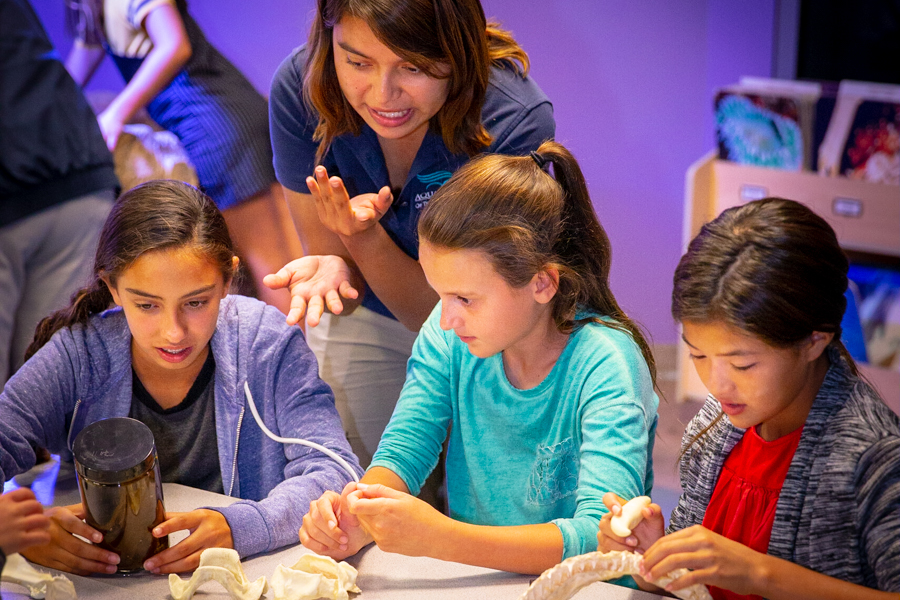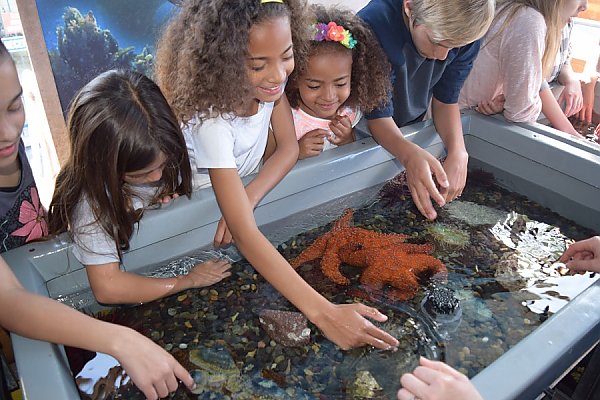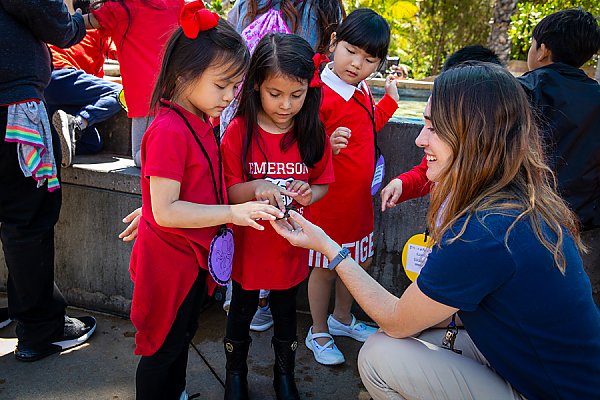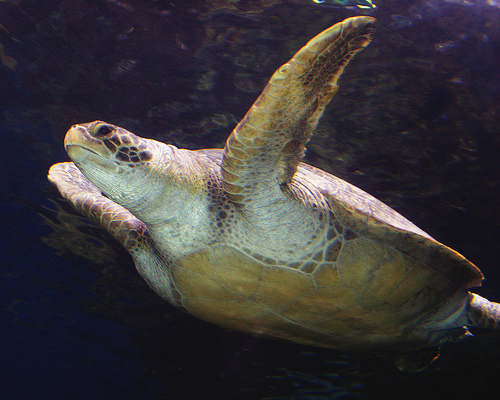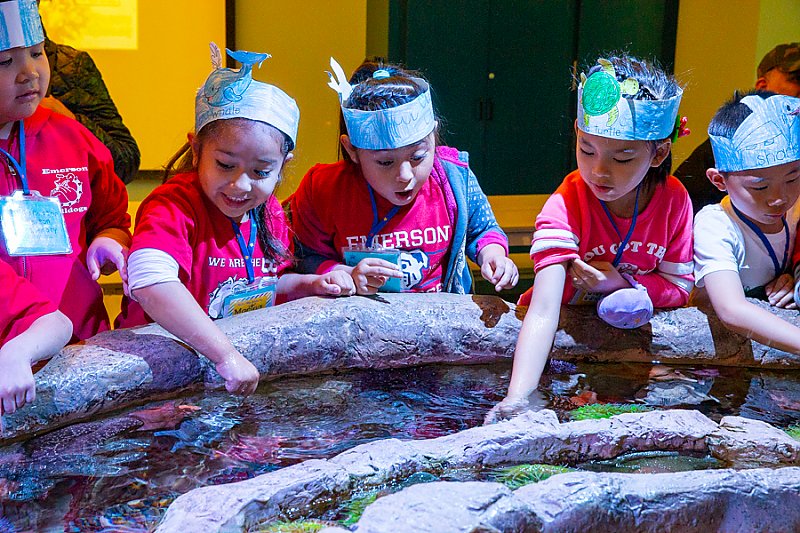
Field Trips to the Aquarium
Reservations & Info • (562) 590-3100, ext. 0
- Provide opportunities to touch animals including sharks, sea stars, anemones, and more
- Engage and excite students
- Inspire awe in the Pacific Ocean and the animals that live there
- Connect to classroom curriculum
- Require advanced reservation


